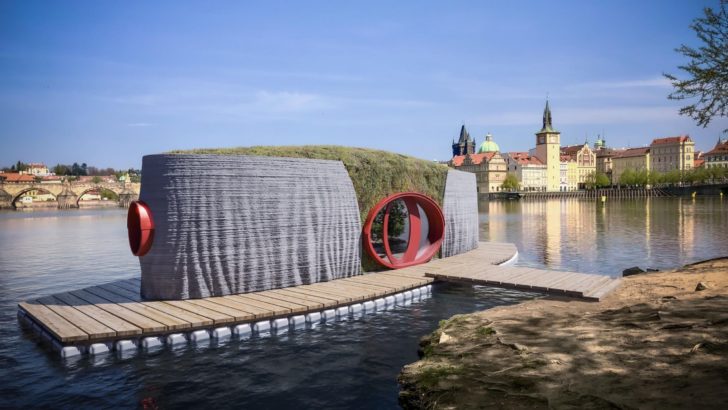We all know about 3D printing, especially for making « small » objects. However, this manufacturing process offers much more than we can imagine. We can use it to build houses and you’ll see that it’s just incredible with the latest one from Czech Republic.
A construction method already in use.
One of the world’s first 3D printed houses was launched in China in 2016. With an area of 400 square meters and a height of two floors, it took 45 days to print the house, and at the time, it seemed incredibly fast.

Since then, similar houses have sprung up in other parts of the world, including Russia, the United States, Italy, and even a whole community of 3D printed houses in Mexico. This month another country joined the list: the Czech Republic.
Presvok, the 3D house designed to last over time.
Prvok is a creation of the Czech artist Michal Trpak, who collaborated with the bank Buřinka to make his vision a reality. « Architecture is rational, calculated in a certain way, » Trpak said. « Sculpture is irrational, it’s more about emotion. I like to merge, experiment and try out new materials and technologies ».
A record construction time.
The house was printed using a robotic arm called Scoolpt, which was modified and reprogrammed for this purpose after being used on an automotive assembly line. The material used was a concrete mixture enriched with fibres and nano-polypropylene substances to improve plasticity and speed up drying. « I like concrete for many reasons, » Trpak said. « It can be shaped, poured, moulded, sprayed, layered… it offers so many possibilities. »

It takes 24 hours for the concrete to « set » or harden, but 28 days for it to reach its full load-bearing capacity, which according to the project engineers is equivalent to that of a bridge. It took only 22 hours, 25 workers and 17 tonnes of concrete to print the house, which is about 43 square metres in size. It is the size of a studio or a small one-bedroom apartment, and the space is divided into a living room with kitchenette, a bedroom and a bathroom. There are no details about the cost of printing the house or its final price once completed.
A floating 3-D house!
Although it can be placed on land, Prvok has been specially designed to be installed on a pontoon. This is quite appropriate; with a submarine shape and circular porthole windows, the house has a distinctly naval appearance. Trpak says it can withstand at least a hundred years in any environment. « In the future, the owners will be able to crush the building once its life span has elapsed, and reprint it with the same material directly on the site, » he said.

It is true that 100 years is not an extraordinarily long lifespan for a house; there are many that have existed for so long and still have decades of life ahead of them. But considering the speed at which 3D printed houses are developing and the simplicity of their construction and materials, the ratio of construction time/life-span is rather interesting.
3D house building is becoming more and more popular.
3D printing has been hailed as a fast, cheap and environmentally friendly way to build affordable housing. Earlier this year, a handful of 3D-printed houses were added to a community outside Austin, Texas, built for people who were previously homeless, and 50 houses are being built for low-income residents of Tabasco, Mexico.

Both projects are from Austin-based start-up ICON, a construction technology company whose co-founder Jason Ballard said: « With 3D printing […] you have the opportunity to take a leap forward in accessibility. Conventional construction methods have many drawbacks and problems that we’ve taken for granted for so long that we’ve forgotten how to imagine an alternative ».
Big advantages but also disadvantages.
3D printed houses have their own drawbacks; they are more practical in rural areas with low population density, but the greatest global need for safe and affordable housing is in or near major cities. The materials used for their construction are currently limited to concrete and plastic, which are not practical in some climates.

In addition, bare concrete walls that are spat out by a printer can present technical difficulties or limit the functionality of the interior of the house. But the positive side is that the Czech project seems to have overcome an important obstacle for 3D printed houses: they are no longer exclusively confined to the ground.
